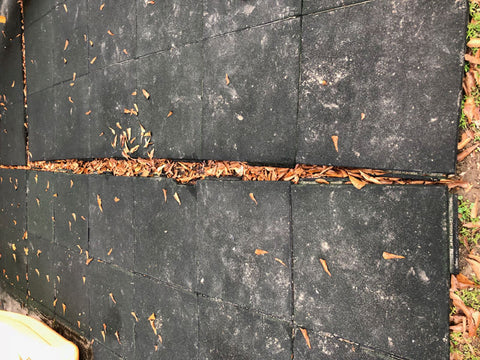No Products in the Cart
Playground surface maintenance or the lack of is one of the leading causes of failing CPSI Inspections. Most commercial playground equipment does have to be maintained. Most playground safety surfaces have to be maintained more. The results from poor maintenance range from tripping hazards to inadequate fall protection which can lead to debilitating to fatal falls. Let's go over all the most common playground safety surfaces out there and how they should be maintained.
Engineered wood fiber, or playground mulch, is one of the most high maintenance safety surfaces out there. It has to be constantly replenished and raked to make sure it performs correctly. One of the more problematic sections for this surface is high traffic areas such as slide exists and below swing seats. This task is made somewhat easier through the use of wear mats throughout the surface. Drainage is also critical to keep playground mulch dry and to extend its shelf life.
Unlike Engineered wood fiber, shredded rubber, or rubber mulch does not have to be replenished that often. You only have to replenish it if you are not bordering it correctly or if you are loosing too much of it to kids shoes. The maintenance in shredded rubber lies in raking it constantly to make you are keeping the HIC test positive, meaning the critical fall height of the surface meets or exceeds the fall height of the equipment. We would add one other maintenance task to this surface: Make sure you inspect the surface to ensure foreign objects and debris are not hidden within the surface.
We have seen little problems with rubber tiles that are installed properly on concrete or flat asphalt. It is when they are installed on aggregate that we see the buckling, the separating and the trip hazards. This is the reason we prefer to see playground rubber tiles glued down and a perimeter established using ramps or other delimiters such as walls or rail road ties in certain instances. The idea is to keep the tiles secure to the surface underneath them and laterally. When tiles separate they can create a substantial tripping hazard for the kids. And often times, they are very difficult to put back together. In the past we have used playground rubber patch kits to fill the gaps.

Synthetic turf is a great option for playground surfacing. If installed correctly, it will provide you years and years of play without any headaches. Most of the problems we find in synthetic turf is in the seams. A synthetic turf seam is the weakest point in the entire surface. Fortunately, there are synthetic turf repair kits you can use to repair the surface. The other problem we find is typically caused by bad site preparation or bad drainage, and that is a sunken area in the synthetic turf surface. The following video shows you how to repair a sunken synthetic turf area.
Poured in place rubber, or more popularly know simply as, playground rubber surface has become very popular in the last few years. It is a great surface for ADA compliance, it's a great option when the playground equipment is already there. The problem we find with poured in place rubber surfacing, is that many vendors do not tell the client that the rubber surface needs to be sealed every once in a while. The poured surface is often presented as a maintenance free surface. So what happens with the lack of binder rejuvenation, is the system starts to crack and holes appear as the wear layer disappears. It starts in high traffic areas and then moves everywhere as the system fails. We highly recommend you use a product such as the rebinder, to rebind your surface before it becomes too problematic to deal with. You rebind when you see granulation, it's that simple. You go on the poured surface, you shuffle your feet, and if you are able to dislodge the EPDM granules, it's time to rebind.
